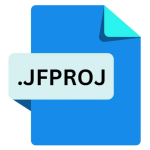.PPDF File Extension

Rights Management Protected File
| Developer | Microsoft |
| Popularity | |
| Category | Encoded Files |
| Format | .PPDF |
| Cross Platform | Update Soon |
What is an PPDF file?
.PPDF files, denoted by the file extension “.ppdf”, represent a specialized category of documents designed for stringent rights management and protection.
Unlike standard PDF files, which primarily focus on document display and sharing, .PPDF files integrate advanced digital rights management (DRM) mechanisms to regulate access, modification, and distribution.
More Information.
.PPDF files emerged as a response to this demand for heightened document security and control. Developed by leading software companies specializing in digital rights management solutions, .PPDF files were engineered to provide a fortified alternative to conventional file formats.
Their primary purpose was to empower content creators and rights holders with the means to protect their intellectual property, confidential data, and proprietary documents from unauthorized access or misuse.
Origin Of This File.
The genesis of .PPDF files can be traced back to the growing need for secure document handling in various sectors such as finance, healthcare, legal, and intellectual property management.
As organizations sought to safeguard sensitive information and control its dissemination, there emerged a demand for file formats that could enforce granular access controls, encryption, and usage restrictions.
File Structure Technical Specification.
.PPDF file adheres to the Portable Document Format (PDF) standard, ensuring compatibility with a wide range of software applications and platforms.
What sets .PPDF files apart is the integration of robust encryption algorithms, access control mechanisms, and digital signatures to enforce rights management policies.
The technical specifications of .PPDF files typically include:
- Encryption: .PPDF files employ strong encryption algorithms to secure the content against unauthorized access. This encryption extends to both the document’s metadata and the actual data payload, ensuring comprehensive protection.
- Digital Rights Management (DRM): .PPDF files incorporate DRM technologies to enforce access controls, usage restrictions, and digital signatures. These DRM mechanisms enable content owners to specify who can view, print, copy, or modify the document, thereby maintaining control over its lifecycle.
- Watermarking: Some .PPDF implementations support dynamic watermarking, wherein unique identifiers or tracking information are embedded within the document to deter unauthorized redistribution or reproduction.
- Certificate-based Authentication: To validate user identities and permissions, .PPDF files may leverage certificate-based authentication mechanisms, requiring users to authenticate themselves before accessing the document’s contents.
How to Convert the File?
Converting .PPDF files may require specialized tools due to the encryption and rights management mechanisms embedded within the file format. Here’s a general guide on how to convert .PPDF files:
- Check Legal and Contractual Obligations: Before proceeding with any conversion, ensure that you have the legal right to do so. Some .PPDF files may be protected by copyright or licensing agreements that prohibit unauthorized modification or redistribution.
- Use DRM Conversion Tools: Look for specialized software solutions designed to handle DRM-protected documents, including .PPDF files. These tools are equipped to decrypt the content while preserving the associated rights management policies.
- Follow Conversion Procedures: Each DRM conversion tool may have its own set of procedures for converting .PPDF files to other formats. Follow the instructions provided by the software carefully to ensure a successful conversion process.
- Select Output Format: Depending on your requirements, choose the desired output format for the converted file. Common options include PDF, Microsoft Word, EPUB, or plain text.
- Configure Conversion Settings: Some DRM conversion tools offer configurable settings such as page layout, image compression, or text formatting. Adjust these settings as needed to tailor the output to your preferences.
- Execute Conversion: Once you’ve configured the conversion settings, initiate the conversion process. Depending on the size and complexity of the .PPDF file, this may take some time to complete.
- Verify Output: After conversion, verify the integrity and accuracy of the converted file. Ensure that the content remains intact and that any DRM restrictions are applied correctly to the output format.
- Comply with Legal Requirements: Be mindful of any legal or contractual obligations associated with the converted file. Respect copyright laws and licensing agreements to avoid infringing on intellectual property rights.
Advantages And Disadvantages.
Advantages:
- Enhanced Security: .PPDF files offer superior security features compared to standard PDFs, making them ideal for protecting sensitive information and intellectual property.
- Granular Control: With .PPDF files, content creators can exert precise control over who can access, modify, or share the document, thereby mitigating the risk of unauthorized disclosure or misuse.
- Compliance Compliance: .PPDF files facilitate compliance with regulatory requirements and industry standards governing data protection, privacy, and confidentiality.
- Trackable Usage: Some .PPDF implementations enable content owners to monitor and track the usage of their documents, providing valuable insights into user behavior and engagement.
Disadvantages:
- Compatibility Concerns: .PPDF files may not be universally supported by all software applications or devices, leading to compatibility issues when sharing or accessing documents across different platforms.
- Complexity: Implementing and managing .PPDF files may require specialized software solutions and expertise, potentially adding complexity to document workflows and administrative tasks.
- Cost: Licensing fees or subscription charges associated with .PPDF solutions could pose financial barriers, especially for smaller organizations or individual users.
- Limited Interoperability: While .PPDF files offer robust security and rights management capabilities, they may limit interoperability with third-party applications or services that do not support DRM features.
How to Open PPDF?
Open In Windows
- Adobe Acrobat: Adobe Acrobat is a widely used PDF viewer that supports .PPDF files. Ensure that you have the latest version installed and configured to handle DRM-protected documents.
- Third-Party DRM Readers: Look for third-party DRM reader applications compatible with Windows that specifically support .PPDF files. These may offer additional features or customization options tailored to DRM-protected content.
Open In Linux
- Evince: Evince is a document viewer commonly used on Linux distributions such as Ubuntu, Fedora, and Debian. While it may not support DRM-protected .PPDF files out of the box, there may be plugins or extensions available to enable this functionality.
- Wine: Wine is a compatibility layer that allows running Windows applications on Linux systems. Consider using Wine to install and run DRM-compatible Windows applications that support .PPDF files.
Open In MAC
- Adobe Acrobat Reader DC: Adobe Acrobat Reader DC is available for macOS and supports viewing .PPDF files. Ensure that you have the latest version installed for optimal compatibility and performance.
- DRM-Compatible Applications: Explore the macOS App Store or third-party software repositories for DRM-compatible applications capable of handling .PPDF files. Be sure to verify compatibility and user reviews before downloading.













